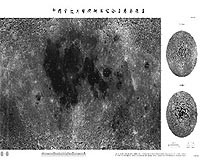 |
Huntsville AL (SPX) Oct 11, 2010 NASA's Marshall Space Flight Center in Huntsville, Ala., collaborated with NASA's White Sands Test Facility in Las Cruces, N.M., and Pratt and Whitney Rocketdyne in Canoga Park, Calif., to successfully complete a series of thruster tests at the White Sands test facility. The test will aid in maneuvering and landing the next generation of robotic lunar landers that could be used to explore the moon's surface and other airless celestial bodies. The Robotic Lunar Lander Development Project at the Marshall Center performed a series of hot-fire tests on two high thrust-to-weight thrusters - a 100-pound-class for lunar descent and a 5-pound-class for attitude control. The team used a lunar mission profile during the test of the miniaturized thrusters to assess the capability of these thruster technologies for possible use on future NASA spacecraft. The test program fully accomplished its objectives, including evaluation of combustion stability, engine efficiency, and the ability of the thruster to perform the mission profile and a long-duration, steady-state burn at full power. The test results will allow the Robotic Lander Project to move forward with robotic lander designs using advanced propulsion technology. The test articles are part of the Divert Attitude Control System, or DACS, developed by the U.S. Missile Defense Agency of the Department of Defense. The control system provides two kinds of propulsion - one for control and the other for maneuvering. The Attitude Control System thrusters provide roll, pitch and yaw control. These small thruster types were chosen to meet the golf-cart-size lander's requirement for light-weight, compact propulsion components to aid in reducing overall spacecraft mass and mission cost by leveraging an existing government resource. "The Missile Defense Agency heritage thrusters were originally used for short-duration flights and had not been qualified for space missions, so our engineers tested them to assess their capability for long-duration burns and to evaluate their performance and combustion behavior," said Monica Hammond, lander propulsion task manager for the Robotic Lunar Lander Development Project at the Marshall Center. "The thrusters are a first step in reducing propulsion technology risks for a lander mission. The results will be instrumental in developing future plans associated with the lander's propulsion system design." During tests of the 100-pound thruster, the Divert Attitude Control System thruster fired under vacuum conditions to simulate operation in a space environment. The tests mimicked the lander mission profile and operation scenarios. The test included several trajectory correction maneuvers during the cruise phase; nutation control burns to maintain spacecraft orientation; thruster vector correction during the solid motor braking burn; and a terminal descent burn on approach to the lunar surface. The objective for the five -pound-class thruster test was similar to the 100-pound thruster test with an additional emphasis on the thruster heating assessment due to the long-duration mission profile and operation with MMH/MON-25 - monomethylhydrazine (MMH) fuel and a nitrogen tetroxide (75 percent)/nitrogen oxide (25 percent) (MON-25) oxidizer. A standard propellant system for spacecraft is the MMH/MON-3 propellant system - containing 3 percent nitric oxide. An alternate propellant system, MMH/MON-25, contains 25 percent nitric oxide. With its chemical composition, it has a much lower freezing point than MON-3, making it an attractive alternative for spacecraft with its thermal benefits and resulting savings in heater power. Because the MMH/MON-25 propellant system has never been used in space, these tests allowed engineers to benchmark the test against the MMH/MON-3 propellant system. "The lower freezing point could save considerable heater power for the spacecraft and increase thermal margin for the entire propulsion system," said Huu Trinh, lead propulsion engineer for the Robotic Lunar Lander Development Project at the Marshall Center. "These tests showed stable combustion in all scenarios and favorable temperature results." The Robotic Lunar Lander Development Project is a partnership between the Marshall Center and the Johns Hopkins University Applied Physics Laboratory located in Laurel, Md.
Share This Article With Planet Earth
Related Links White Sands Test Facility Mars News and Information at MarsDaily.com Lunar Dreams and more
 China Scouts Moon Landing Sites
China Scouts Moon Landing SitesSydney, Australia (SPX) Oct 04, 2010 China's second lunar mission, Chang'e 2, will perform several tasks during its flight. Some of these are purely scientific, aimed at helping us to understand the Moon and the space around it. One task is highly practical. China is using the spacecraft to scout landing sites for future Chinese Moon missions. China's first lunar orbiter, Chang'e 1, made a complete map of the Moon. Whil ... read more |
|
| The content herein, unless otherwise known to be public domain, are Copyright 1995-2010 - SpaceDaily. AFP and UPI Wire Stories are copyright Agence France-Presse and United Press International. ESA Portal Reports are copyright European Space Agency. All NASA sourced material is public domain. Additional copyrights may apply in whole or part to other bona fide parties. Advertising does not imply endorsement,agreement or approval of any opinions, statements or information provided by SpaceDaily on any Web page published or hosted by SpaceDaily. Privacy Statement |